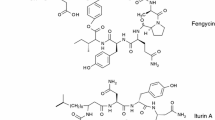Abstract
Incorporation of thymidine, thymidine monophosphate (TMP), thymidine triphosphate (TTP), uridine and orotic acid into DNA, RNA and protein in Blastomyces dermatitidis and Histoplasma capsulatum was studied utilizing a specific acid hydrolysis technique developed for these fungi. Thymidine was incorporated to the greatest extent (approximately 0.5 % of added label) followed by uridine, orotic acid, TMP and TTP. In Blastomyces, uridine and orotic acid labeled primarily RNA. TMP and TTP labeled RNA, DNA and protein at nearly the same level. In Histoplasma RNA was labeled poorly by any of these precursors. TMP and TTP labeled DNA predominately and protein to a slightly lower level. Deoxyadenosine or uridine media supplements of 250 μg/ml did not enhance incorporation. All precursors tested were found to be nonspecific in that RNA, DNA and protein were labeled. All data indicate that neither RNA nor DNA synthesis can be specifically measured in whole cells or acid precipitates by any of these precursors. Specific radiometric monitoring with these isotopes therefore requires the separation of these macromolecules.
Similar content being viewed by others
References
Adelstein, S.J. & C.P. Lyman. 1968. Pyrimidine nucleoside metabolism in mammalian cells: an in vitro comparison of two rodent species. Exp. Cell Res. 50: 104–116.
Boyce, R.P. & R.B. Setlow. 1962. A simple method of increasing the incorporation of thymidine into the deoxyribonucleic acid of Escherichia coli. Biochim Biophys. Acta. 61: 618–620.
Breitman, T.R., M. Bradfurd, & W.D. Cannon, Jr. 1967. Use of exogenous deoxythymidylic acid to label the deoxyribonucleic acid of growing wild type Escherichia coli. J. Bacteriol. 93: 1471–1472.
Brendel, M. & R.H. Haynes. 1972. Kinetics and genetic control of the incorporation of thymidine monophosphate in yeast DNA. Molec. Gen. Genet. 117: 39–44.
Brooks. V.J. 1966. Thymidine kinase and thymidylate kinase in the silkworm, Antheraea pernyi. Biochim. Biophys. Acta. 119: 268–275.
Carmody, J.M. & R.M. Herriott. 1970. Thymine and thymidine uptake by Haemophilus influenzae and the labeling of deoxyribonuclei acid. J. Bacteriol. 101: 525–530.
Chello, P.L. & J.J. Jaffe. 1972. Comparative properties of trypanosomal and mammalian thymidine kinases. Comp. Biochem. Physiol. 43B: 543–562.
Cleaver, J.E. 1967. Preparation, stability and detection of labeled thymidine. In Thymidine Metabolism and Cell Kinetics. pp. 15–37. North Holland Publishing Co., Amsterdam.
Coddington, A. & M. Bagger-Sorensen. 1963. The formation of deoxyadenosine triphosphate in ascites tumor cells in vitro and its effect on deoxyribonucleic acid synthesis. Biochim. Biophys. Acta. 72: 598–607.
Davis, F.F., A.F. Carlucci, & I.F. Roubein. 1959. Trace nucleotides in certain ribonucleic acids from yeasts. J. Biol. Chem. 234: 1525–1529.
Durham, J.P. & D.H. Ives. 1972. The metabolism of deoxyribonucleotides in Lactobacillus acidophilus: regulation deoxyadenosine, deoxycytidine, deoxyguanosine and deoxythymidine kinase activities by nucleotides. Biochim. Biophys. Acta. 228: 9–25.
Fink, R.M. & K. Fink. 1962. Utilization of radiocarbon from thymidine and other precursors of ribonucleic acid in Neurospora crassa. J. Bio. Chem. 237: 2289–2290.
Fink. R.M. & K. Fink. 1962. Relative retention of 3H and 14C labels of nucleosides incorporated into nucleic acids of Neurospora. J. Biol. Chgm. 237: 2889–2891.
Glaser, V.M., M.A. Al-Nuri, V.V. Groshev, & S. V. Shestakov. 1973. The labeling of nucleic acids by radioactive precursors in the blue green algae Anacystis nidulans and Synechocystis aquatilis Sanv. Arch. Mikrobiol. 92: 217–226.
Grivell, A.R. & J.F. Jackson. 1968. Thymidine kinase: evidence for its absence from Neurospora crassa and some other microorganisms, and the relevance of this to the specific labeling of deoxyribonucleic acid. J. Gen. Microbiol. 54: 307–317.
Her, M.O. & R.L. Momparler. 1971. Mammalian deoxynucleoside kinases. J. Biol. Chem. 246: 6152–6158.
Jones, R.W. & D.G. Wild. 1973. Regulation of uptake of purines, pyrimidines and amino acids by Candida utilis. Biochem. J. 134: 617–627.
Jyssum, S. 1971. Utilization of thymine, thymidine and TMP by Neisseria meningitidis. Acta. Path. Microbiol. Scand. 79: 778–788.
Jyssum, S. 1974. Search for thymidine phosphorylase, nucleoside deoxyribosyltransferase and thymidine kinase in genus Neisseria. Acta. Path. Microbiol. Scand. 82: 52–56.
Jessum, S. & K. Brove. 1974. Search for thymidine phosphorylase, nucleoside deoxyribosyltransferase and thymidine kinase in Moraxella, Acinetobacter and allied bacteria. Acta Path. Microbiol. Scand. 82: 57–66.
Kennell, D. 1967. Use of filters to separate radioactivity in RNA, DNA and protein. In Methods in Enzymology (L. Grossman & K. Moldave, Eds.), Vol. XII, pp. 686–693. Academic Press, New York.
Kihlman, B.A. & G. Odmark. 1966. Effects of adenine nucleotides in Vicia faba. Hereditas 56: 71–82.
Lark, K.G. 1960. Studies on the mechanism regulating periodic DNA synthesis in synchronized cultures of Alcaligenes fecalis. Biochim. Biophys. Acta. 45: 121–132.
Lichtenstein, J., H.D. Barner, & S.S. Cohne. 1960. The metabolism of exogenously supplied nucleotides by Escherichia coli. J. Biol. Chem. 235: 457–465.
O'Donovan, G.A. & J. Neuhard. 1970. Pyrimidine metabolism in microorganisms. Bacteriol. Rev. 34: 278–343.
Price, T.D., H.A. Hinds. & R.J. Brown. 1963. Thymine ribonucleotides of soluble ribonucleic acid of rat liver. J. Bio. Chem. 238: 311–317.
Rachmeler, M., J. Gerhart, & J. Rosner. 1961. Limited thymidine uptake in Escherichia coli due to an inducible thymidine phosphorylase. Biochim. Biophys. Acta. 49: 225–225.
Restaino, L. & E.W. Frampton. 1975. Labeling the deoxyribonucleic acid of Anacystis nidulans. J. Bacteriol. 124: 115–160.
Sagan, L. 1965. An unusual pattern of tritiated thymidine incorporation in Euglena. J. Protozool. 12: 105–109.
Stewart, P.R. 1975. Analytical methods for yeasts. In Methods in Cell Biology (D.M. Prescott, Ed.), Vol. XII, pp. 11–147. Academic Press, New York.
Strobach, G. & S. Kretschmer. 1976. Einbau von thymidin in die DNA von Actinomyceten. I. Der einbau exogenen thymidin in die DNA von Thermoactinomyces vulgaris. Z. Allege. Mikrobiol. 17: 559–568.
Zeman, L. & C.V. Lusena. 1974. DNA precursors and the absence of thymidine kinase in yeast mitochondria. FEBS Lett. 40: 84–87.
Zimmerman, M. 1964. Deoxyribosyl transfer II. Nucleoside pyrimidine deoxyribosyltransferase activity of three partially purified thymidine phosphorylases. J. Biol. Chem. 239: 2622–2627.
Author information
Authors and Affiliations
Rights and permissions
About this article
Cite this article
Shearer, G., Hubbard, J.C. & Larsh, H.W. Non-specific incorporation of nucleic acid precursors in Blastomyces dermatitidis and Histoplasma capsulatum. Mycopathologia 72, 111–119 (1980). https://doi.org/10.1007/BF00493820
Issue Date:
DOI: https://doi.org/10.1007/BF00493820




